
The Qin and Han dynasties were a critical period for the development of calligraphy. On the one hand, the divergence of ancient script writing and inscriptions in the three dynasties was unified, resulting in the standard calligraphy style of small seal script; The province matured and developed into a popular calligraphy style in the Han Dynasty. As the trend of the times tends to be simpler and faster, and the official script continues to evolve and differentiate, there are cursive script, running script and regular script. The gradual change of calligraphy did not happen overnight. Therefore, after entering the Wei, Jin, Southern and Northern Dynasties, transitional calligraphy styles and mixed calligraphy styles with various styles can be seen from time to time. law.
The Sui and Tang dynasties were another critical period. Political unification brought about the flow of calligraphy in the north and south, and the development of brushwork became complete. Since then, regular script has become a popular calligraphy style in all dynasties. After entering the Song Dynasty, in order to preserve the long-term circulation of the calligraphy of the former sages, engravings became more and more popular. However, the Song people were not satisfied with inheriting the tradition, and the calligraphy orientation showed personal affection and natural interest.
Since the Yuan Dynasty, the calligraphy tradition of Jin and Tang Dynasties has been continued. However, the idea of not being bound by tradition also became active, and in the Ming Dynasty there was a breath of vertical and horizontal escape. The calligraphy of the Ming people is extremely complex, and the cursive script is especially lively and free, which is suitable to contrast with those who followed the traditional laws at that time. During this period, the calligraphers with their own unique personality have also stepped out of their own paths and are not engulfed by the trend of the times.
Since the Qing Dynasty, the three dynasties of the Qin and Han dynasties have been unearthed one after another, which can be said to be unique. Under the influence of a pragmatic academic atmosphere, the people of the Qing Dynasty rubbed the tablet version, so as to interact with the engraved post, and the vision of calligraphy development was able to connect the ancient and the modern, and finally innovated in seal script and official script, and led a new direction.
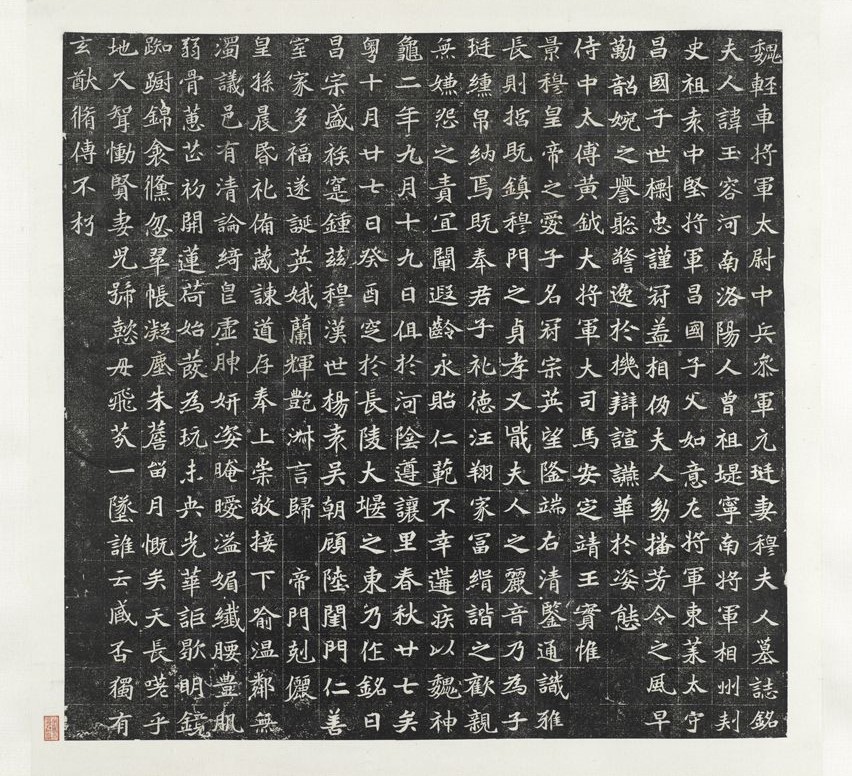
The epitaph of Mu Yurong in Northern Wei Dynasty

The epitaph of Mu Yurong in Northern Wei Dynasty (part)
This record was engraved in 519, and it records the family background and talent of the wife of Yuan Shun (494-526) of the Northern Wei Dynasty (494-526) and Mu Yurong (493-519). Unearthed in 1922 near Nanchenzhuang, Luoyang, it is one of the famous "Seven Records of Yuanyang Ducks" and is now in the Forest of Steles in Xi'an."Seven Records of Yuanyang Ducks" is the epitaph of seven couples of Yuan family during the Northern Wei Dynasty. The surname "Yuan" is Tuoba, a descendant of the Xianbei people. The Northern Wei Dynasty was a dynasty established by the Tuoba clan of the Xianbei ethnic group. It was founded in 386 AD and ended in 557 AD. It was the first dynasty of the Northern Dynasties during the Southern and Northern Dynasties. The seven pairs of "mandarin ducks" are the epitaphs of Mu Liang and his wife Wei Taifei during the Northern Wei Dynasty, the epitaphs of Yuan Yao and his wife Liang, the epitaphs of Yuan Shu and his wife Mu Yurong, the epitaphs of Yuan Tan and his wife Sima, the epitaph of Yuan Yu and his wife Feng, Qiu Zhe and his wife Xianyu Zhonger's epitaph and Yuanjian and his wife Tuyuhun's epitaph. In the late Northern Wei Dynasty, the capital was moved to Luoyang, and the royal family was buried there. After the death of the seven couples, they were buried in Mangshan, Henan with their epitaphs. Later, the epitaph was stolen, and in the early years of the Republic of China, it was collected by Mr. Yu Youren and donated to Xi'an Forest of Steles.
"Death and life are bound together, and you talk to your son. Holding your hand, you will grow old with your son." These epitaphs were all inscribed around AD 500. Although it has been more than 1,400 years old, every word and word in the chronicle records the owner of the tomb" The love story of life and death and the sweetness of the eyebrows.
Yuan Shu and his wife, Mu Yurong, recorded in their articles that Yuan Shu (493-526) was the grandson of Emperor Jingmu of the Northern Wei Dynasty. Mu Yurong (483-519) was smart and resourceful since childhood. Yuan Shu's father admired the Mu family very much. She is also loyal and filial to Mu Yurong. Although she is 10 years older than Yuan Jun, she still proposes to the Mu family. After Mu Yurong married Yuan Jun, he obeyed the etiquette, "the family is rich and harmonious, and the relatives have no responsibility for resentment", "provide reverence, take over Yu Wen", and the two have a very harmonious relationship. "Mu Yurong's Epitaph" is slightly flat throughout, the horizontal painting is tilted upward to the right, and the hook is often oblique triangle or sickle shape. Open and open, the posture is like a bird spreading its wings, and it has a high-spirited feeling. The head and tail of various lines are mostly square-folded and sharp-edged strokes, with edges and corners, and the middle section is added with the southern-style round-turn strokes, with a graceful waistline, which is both strong and tactful.
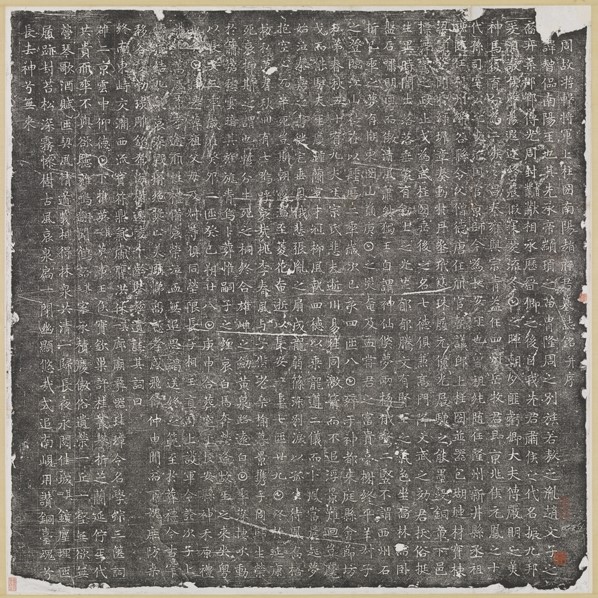
The epitaph of Zhao Zhixue of Wu Zhou Dynasty
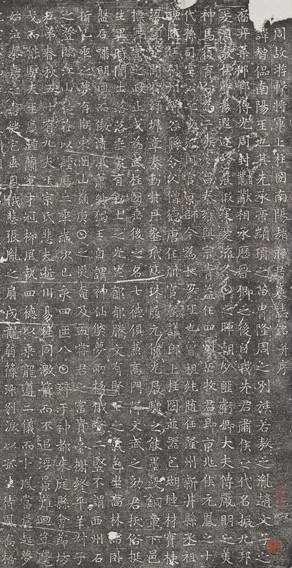
The epitaph of Zhao Zhixuan in Wuzhou and Zhou Dynasty (detail)
This record was engraved in 703. It records the incident of the deceased Zhao Zhixuan (641-699), and also records that his son held a grand funeral after the death of his mother Zong Shi (656-702), buried his parents together, and relocated his grandparents, uncles and others to form a family. cemetery. Such a resource-intensive act reflects the family concept that husband and wife and family should depend on each other for life and death at that time, and jointly construct an ideal destination. The whole chapter is written in regular script. The style is influenced by Chu Suiliang's (596-657) "Yanta Shengjiao Preface".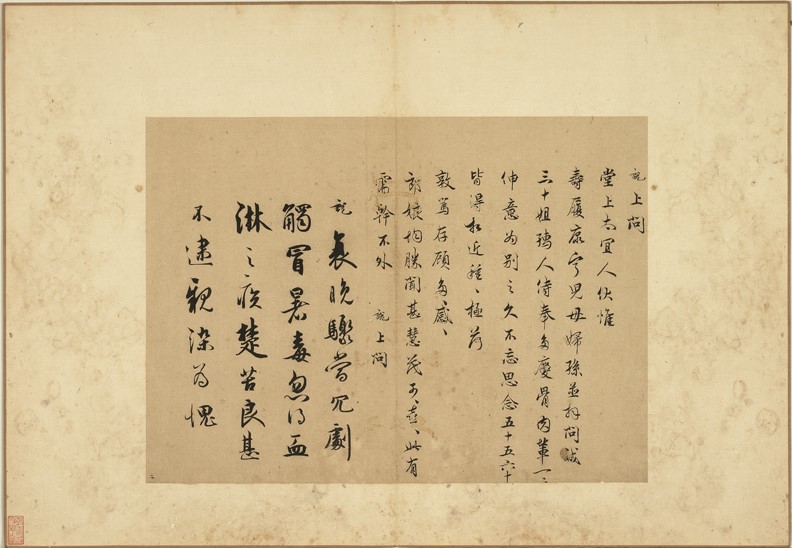
Song Wu said "Shang Wen Tang Shang Tie"
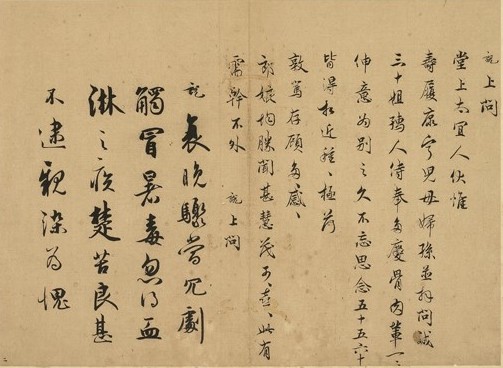
Song Wu said "Shang Wen Tang Shang Tie" (detail)
Wu Shuo (?-1169 onwards) was an official, writer, and calligrapher of the Southern Song Dynasty.Interpretation : It is too pleasant to say that it is too pleasant to ask questions. Fu Weishou is on Corning. Children, mothers and grandchildren. And ask sincerity. Thirty sisters and children serve Duoqing. The flesh-and-blood generation stretched their minds one by one. for a long time. Do not forget to miss. fifty-five sixty. All must be close. All sorts of extremely Holdun scrupulous care. Feeling a lot. Lang Niang wins. Heard very Huimao. Delightful. This has to be done. Say ask. To say that the decline is sudden is a redundant drama. Touch the heat poison. Sudden bloody disease. Very bitter. Don't be ashamed of yourself.
This piece is a one-foot slip, and the first paragraph is the main text, greeting relatives and friends. This paragraph was written by others, using sharp and round strokes, and the shape of the words is also clumsy to change. In the latter part of the book, he wrote a postscript to report the current situation and explain the reasons for "not being able to catch up with him." The fonts in this paragraph are big and small, the strokes are converging and scattered, the contrast is strong, but the style is quite neat. The shape of the lines is constantly and smoothly changing between the square, the circle and the thickness, and the brushwork is very clever, which is the essence of Wang Xizhi (303-361).

Song Fan Chengda's "Lisu Tie"
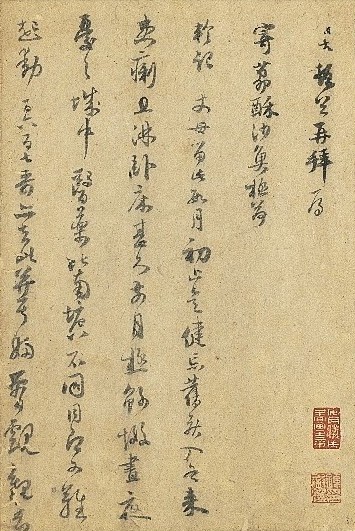
Song Fancheng University's "Lisu Tie" (detail)
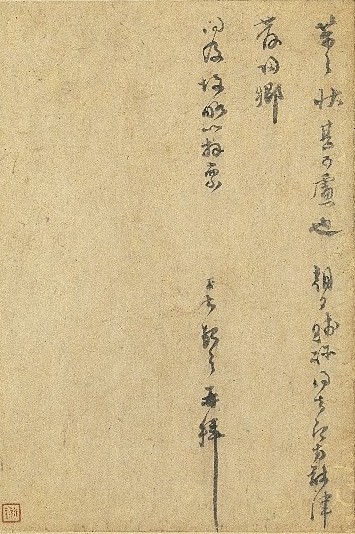
Song Fancheng University's "Lisu Tie" (detail)
Fan Chengda (1126-1193), an important statesman and writer of the Southern Song Dynasty. He is good at calligraphy and ranks among the four great masters of the Southern Song Dynasty. The name is Zhineng, and the name is Shihu Jushi, a native of Wujun (now Suzhou, Jiangsu). In the twenty-fourth year of Emperor Gaozong's Shaoxing (1154) jinshi, he went on an envoy to the state of Jin under the pretense of a senior scholar of the Imperial Palace. In the time of Emperor Xiaozong, in addition to the Fuwen Pavilion to be made, Sichuan made the envoy. Later, in addition to the Ministry of Officials, he paid homage to political affairs, entered the political palace, led the Dongxiao Palace, and added a scholar. In his later years, he lived in seclusion in his hometown of Shihu. Friendship with Lu You is very strong. Chengda is full of talents and is known as a literary name. When attacked, it is in favor of anti-gold. Good at writing idyllic poetry, his style of poetry follows the Tang Dynasty, and he sympathizes with the suffering of the people, which has a great influence on later generations. Not only good at poetry, but also good at writing. Calligraphy is concealed by the title of poetry. Gongshuhan, proficient in cursive script, learned from Huang Tingjian and Mi Fu, and changed his body and became his own family. His books are vigorous and lovely, his business is sluggish, elegant and quaint, and his pen is smooth and natural.Ming Tao Zongyi's "Shuhihuiyao" said that Fan Chengda's "Zong Huang Tingjian and Mi Fu, although the rhyme is not good enough, but the vigor is considerable". Fan Chengda's calligraphy was influenced by his mother, Mrs. Cai, the granddaughter of Cai Xiang, one of the four great calligraphers of the Northern Song Dynasty.
This piece was originally a ruler to report the current situation of my mother-in-law. The language is simple and fluent, the text is concise and comprehensive, full of worry and concern. The whole piece is cursive, combining the styles of Su Shi (1037-1101) and Huang Tingjian (1045-1105), mostly using round-turning, forward-looking, and continuous brushwork. The fonts change from big to small, or from small to big, and then change the thickness of the lines to form an elegant and subtle sense of dynamic and rhythm, revealing the beauty of freshness, warmth, honesty and tactility.
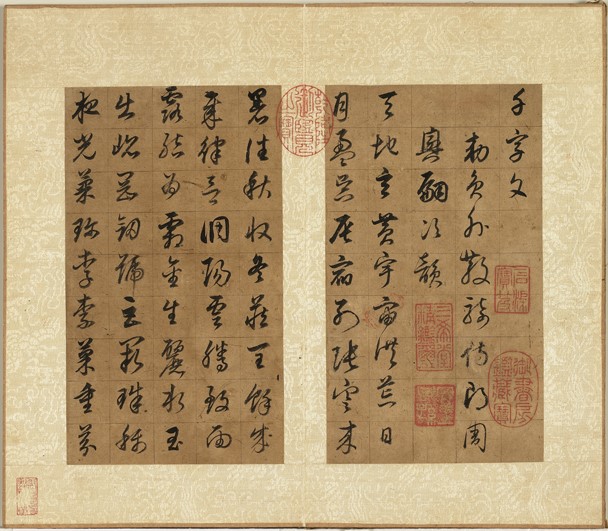
Dong Qichang of Ming Dynasty

Dong Qichang of Ming Dynasty
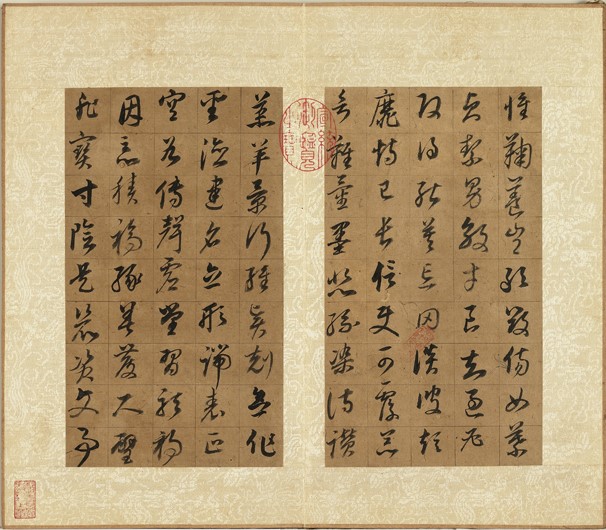
Dong Qichang of Ming Dynasty
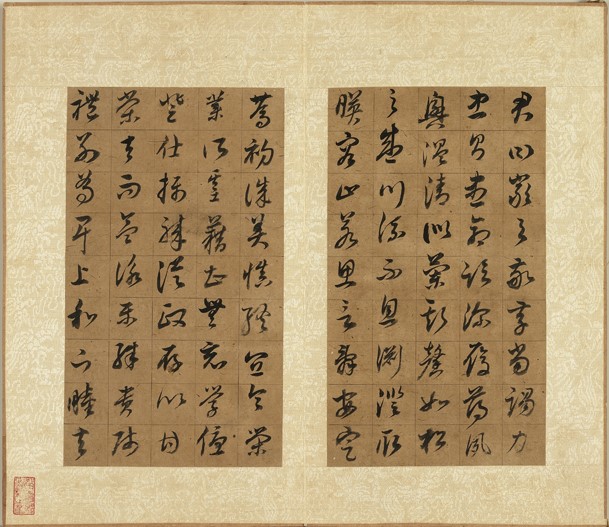
Dong Qichang of Ming Dynasty
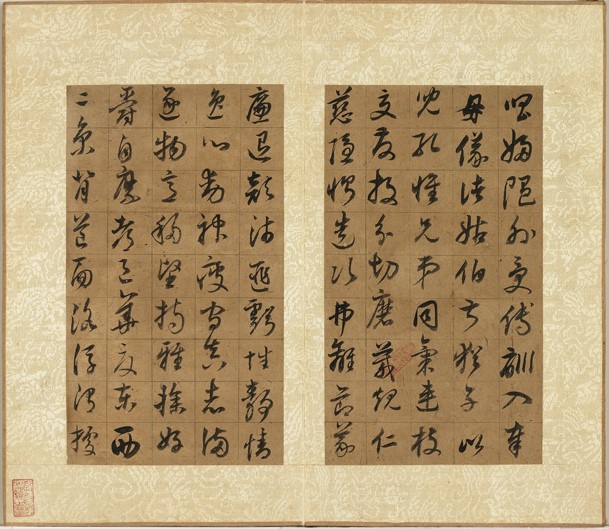
Dong Qichang of Ming Dynasty

Dong Qichang of Ming Dynasty

Dong Qichang of Ming Dynasty

Dong Qichang of Ming Dynasty
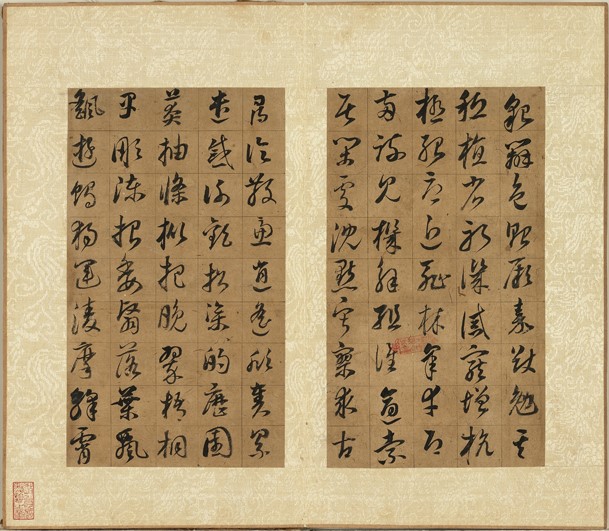
Dong Qichang of Ming Dynasty
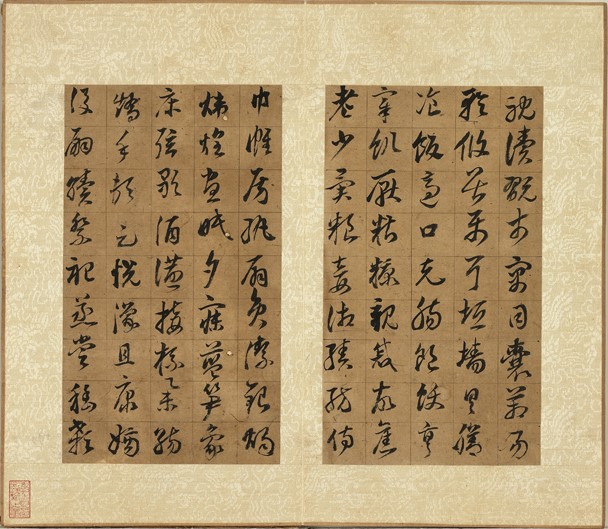
Dong Qichang of Ming Dynasty
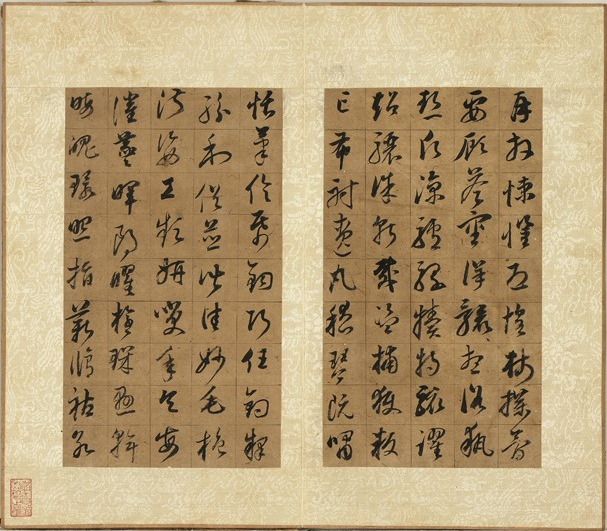
Dong Qichang of Ming Dynasty

Dong Qichang of Ming Dynasty
Dong Qichang (1555-1636), courtesy name Xuanzai, was an official to the Ministry of Rites, and was an influential calligrapher, painter, connoisseur and art historian.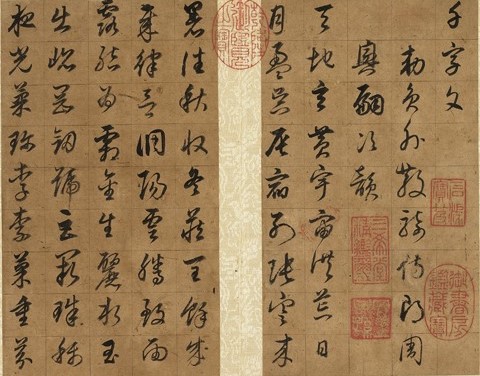
Ming Dong Qichang's "Thousand-Character Script Imitation of Ouyang Xun" (part)
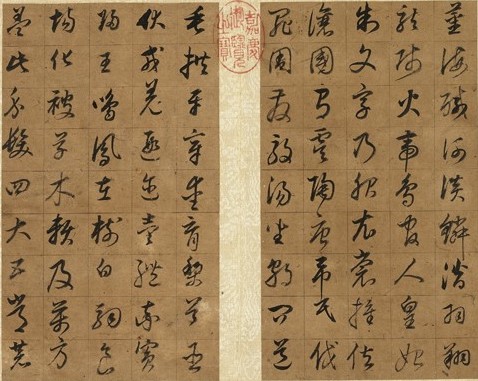
Ming Dong Qichang's "Thousand-Character Script Imitation of Ouyang Xun" (part)
Thousand-character script is a rhyme composed of 1,000 Chinese characters, compiled by Zhou Xingsi during the Liang Dynasty during the Northern and Southern Dynasties. The full text is a four-character sentence, with neat confrontation, clear coherence, and outstanding literary talent. Dong Qichang used to write thousands of characters in different script styles such as small script, running script, and cursive script many times. Dong Qichang went to ancient times, not only took its charm, but also participated in his own meaning, and turned the ancient method into my own method. This work is no exception, it can be described as a masterpiece of its ancient times. This volume of cursive ink was once collected by the Qing Dynasty and is now in the National Palace Museum in Taipei.This volume is self-titled "Ouyang Xun (557-641) Cursive Thousand Characters", written in 1628. Use the pen more sharply, and the contrast between the square and the circle, the thickness and the thinness of the lines is very strong. It is written in cursive script, but the characters are independent, the font size is similar, and the rules and regulations are quite ancient. The ink color changes from dark to light to form groups of words, creating a sense of visual rhythm, reflecting the sophisticated skills, as well as the unrestrained and confident imagery.
(The pictures and texts in this article are based on the official website of the Taipei Palace Museum and related introductions)